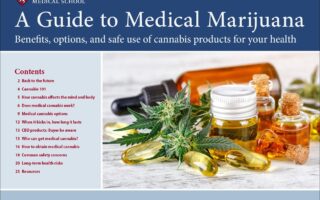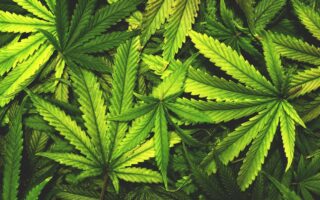Title: “Unraveling the Green Thread: Are Marijuana and Hemp Really the Same?”
In a world increasingly enamored with all things green, the conversation around marijuana and hemp has reached a crescendo. These two prolific plants, both members of the Cannabis sativa family, often find themselves tangled in a web of misconceptions and debate. Are they merely two sides of the same leaf, or do they embody divergent paths in the landscape of culture, industry, and legality? As public curiosity grows alongside shifting regulations, it becomes imperative to peel back the layers and explore the distinct characteristics that set marijuana and hemp apart. In this article, we will navigate the nuances of these two fascinating plants, unraveling the myths and facts that define their identities and impact on our society. Join us as we dive deep into the world of cannabis to clarify the differences that truly matter.
Table of Contents
- Exploring the Distinctive Characteristics of Marijuana and Hemp
- Understanding the Legal Landscape Surrounding Cannabis Plants
- Unraveling the Common Misconceptions About Their Uses
- Recommendations for Responsible Consumption and Sourcing
- Q&A
- Future Outlook
Exploring the Distinctive Characteristics of Marijuana and Hemp
The world of cannabis is rich and varied, but the lines between marijuana and hemp often blur for many. While both plants belong to the Cannabis sativa species, they exhibit distinct characteristics that set them apart. One of the primary differences lies in their THC content. Marijuana typically contains higher levels of tetrahydrocannabinol (THC), the psychoactive compound responsible for the ‘high’ sensation. In contrast, hemp has a negligible amount of THC (usually less than 0.3%), making it non-psychoactive. This fundamental distinction leads to varying uses in consumer products.
In addition to their THC content, marijuana and hemp have unique applications and benefits. Here are some notable differences:
- Uses: Marijuana is primarily cultivated for recreational and medicinal use, offering a range of cannabinoids and terpenes. Hemp, on the other hand, is utilized for industrial purposes, including textiles, paper, and biofuels.
- Cultivation: Hemp is cultivated for its strong fibers and seeds and grows tall with a bushy appearance, whereas marijuana tends to grow shorter and fuller, with broader leaves.
- Legal Status: The legal framework surrounding these plants varies significantly across regions; while hemp is largely legal due to its low THC levels, marijuana’s legality often depends on local laws.
Understanding the Legal Landscape Surrounding Cannabis Plants
The distinction between marijuana and hemp is not merely a botanical one; it has significant legal ramifications as well. Marijuana typically refers to cannabis plants that contain higher concentrations of THC (tetrahydrocannabinol), the compound responsible for the psychoactive effects associated with its use. In contrast, hemp is defined legally in many jurisdictions as cannabis with a THC concentration of 0.3% or less. This distinction is vital for legal compliance, as the cultivation, sale, and use of marijuana are heavily regulated or prohibited in numerous areas, whereas hemp products have seen a surge in acceptance and legalization, particularly in terms of CBD (cannabidiol) extraction and use in consumer goods.
Understanding these legal differences is essential for consumers, producers, and lawmakers alike. Here are some key aspects to keep in mind:
- Regulatory Bodies: Different entities oversee marijuana and hemp, often resulting in varied legal frameworks.
- Health Regulations: Products derived from hemp are frequently subject to less stringent health guidelines compared to those from marijuana.
- Market Opportunities: The hemp industry has rapidly expanded due to its agricultural versatility and legal benefits.
| Aspect | Marijuana | Hemp |
|---|---|---|
| THC Content | Above 0.3% | 0.3% or less |
| Legal Status | Varies greatly by state/country | Generally more acceptable and legalized |
| Primary Uses | Recreational and medicinal | Textiles, food, CBD, and biofuel |
Unraveling the Common Misconceptions About Their Uses
Understanding the distinctions between marijuana and hemp is crucial, particularly as both plants belong to the Cannabis sativa species but serve markedly different purposes. Unfortunately, a prevailing misconception is that they produce indistinguishable effects or that one can substitute for the other. In reality, while hemp is cultivated primarily for its fibers, seeds, and oil, marijuana is grown for its psychoactive properties. The differences lie not only in their intended uses but also in their chemical composition, notably the levels of THC and CBD:
| Characteristics | Marijuana | Hemp |
|---|---|---|
| THC Content | High (over 0.3%) | Low (0.3% or less) |
| Cultivation Purpose | Medical/ Recreational | Industrial Uses |
| Common Products | Oils, edibles, flowers | Textiles, paper, construction materials |
Another common fallacy is equating the health benefits associated with hemp with those from marijuana. While both plants have therapeutic potential, the sources and mechanisms differ significantly. For instance, the lack of psychoactive effects in hemp makes it a more suitable choice for certain applications, such as dietary supplements or skincare products. Additionally, hemp is often touted for its rich nutrients and eco-friendly attributes, presenting a range of applications:
- Textiles: Durable and sustainable fabric options.
- Biofuels: Renewable energy sources derived from hemp.
- Nutritional Products: Rich in omega fatty acids and proteins.
Recommendations for Responsible Consumption and Sourcing
In the evolving landscape of cannabis and hemp, responsible consumption and ethical sourcing play pivotal roles in promoting sustainability and well-being. Consumers should prioritize products that adhere to rigorous quality standards. To ensure that your choices align with these values, consider the following recommendations:
- Research Brands: Look for companies with transparent sourcing practices and certifications that demonstrate commitment to sustainable agriculture.
- Support Local Producers: Whenever possible, opt for locally produced hemp and cannabis products to reduce carbon footprints and stimulate local economies.
- Check for Third-Party Testing: Ensure products have been tested by independent labs for potency and purity, confirming they are free from harmful contaminants.
- Choose Organic: Select organic options to support farming practices that do not rely on synthetic pesticides or fertilizers.
Additionally, educating oneself about the environmental impacts of hemp and cannabis cultivation is crucial. This knowledge can influence purchasing decisions and encourage support for practices that promote ecological balance. Consider the following impactful practices in your consumption habits:
| Practice | Benefit |
|---|---|
| Regenerative Agriculture | Enhances soil health and biodiversity. |
| Minimal Packaging | Reduces waste and environmental impact. |
| Community Cultivation Initiatives | Fosters a sense of community while promoting local products. |
Q&A
Q&A: Are Marijuana and Hemp the Same Thing?
Q1: What is the basic difference between marijuana and hemp?
A1: At first glance, marijuana and hemp may seem like two peas in a pod, but they hail from the same plant family—Cannabis sativa—with distinct personalities. Marijuana is often celebrated for its psychoactive properties, primarily due to high levels of tetrahydrocannabinol (THC). In contrast, hemp struts onto the scene with a significantly lower THC content, typically below 0.3%, leading to a much more mellow experience. Think of marijuana as the life of the party and hemp as the calm, collected guest who knows how to make a great hemp seed salad!
Q2: Can both marijuana and hemp be used for the same purposes?
A2: Both plants are versatile, yet they have their own specialties! Marijuana is commonly used for recreational and medicinal purposes—pain relief, anxiety reduction, or simply a boost of creativity. Meanwhile, hemp flexes its muscles in industries like textiles, construction, and even food products. So, while they share a family tree, their careers and contributions to society are quite different!
Q3: Are marijuana and hemp both legal?
A3: The legal landscape for both hemp and marijuana resembles a tangled web that varies by country, state, or region. As of recently, hemp has been legalized in many places due to the 2018 Farm Bill in the U.S., making it eligible for commercial production. Marijuana, however, dances a different tune; its legality still depends on local laws and regulations, with some areas allowing recreational use and others strictly permitting medicinal applications. That’s why it’s vital to know your local laws—just like picking the right time to wear flip-flops!
Q4: Do marijuana and hemp have any common health benefits?
A4: Indeed, both plants have sparked interest in the health and wellness arena! They contain cannabinoids, which have shown promise in various therapeutic applications. Hemp is a great source of dietary fiber, essential fatty acids, and protein, while marijuana is often associated with pain management, appetite stimulation, and anxiety relief. The key difference lies in how they interact with our bodies due to varying THC levels. It’s a bit like choosing between a delicious smoothie (hemp) and an adventurous cocktail (marijuana) for the benefits you seek!
Q5: Can I get high from using hemp products?
A5: Not unless there’s some hidden THC in the mix! Hemp products, which include items like hemp seed oil and CBD oils, typically feature only trace amounts of THC. These products are designed to offer potential benefits without the intoxicating effects associated with marijuana. So, feel free to enjoy that hemp-infused smoothie without the fear of an unexpected party in your mind!
Q6: Is it possible to grow marijuana and hemp together?
A6: In theory, yes! If you have the right permissions, you can cultivate both hemp and marijuana side by side. However, it’s essential to keep their distinct identities in check, especially to avoid cross-pollination, which can affect the potency of marijuana plants. This delicate balance requires knowledge and consideration—imagine hosting a perfectly planned dinner party where every dish complements each other without overshadowing the others!
Q7: What’s the bottom line—are marijuana and hemp interchangeable?
A7: While both marijuana and hemp come from the same Cannabis sativa family, they are far from interchangeable. With unique characteristics, uses, and legal statuses, understanding the difference between the two is crucial. They each play their own role in society, contributing to everything from health and wellness to sustainable products. So next time you’re pondering the great cannabis conundrum, remember: while they share a common ancestry, they are on distinctly different paths!
Future Outlook
while marijuana and hemp may belong to the same plant family, their distinct characteristics, uses, and legal classifications set them apart in significant ways. Understanding these differences not only enriches our knowledge but also helps clarify the ongoing discussions surrounding cannabis in our society. Whether you’re exploring the benefits of hemp in sustainable practices or delving into the therapeutic potential of marijuana, it’s clear that both plants play unique and valuable roles. As we continue to navigate the evolving landscape of cannabis, fostering informed conversations will ensure that we appreciate the diverse applications and implications of these fascinating plants. So, as we unroll the story of cannabis, let’s embrace both sides—one rooted in tradition and medicinal use, the other in innovation and environmental sustainability. The world of cannabis is complex and colorful, and it’s one worth exploring further.



